-
Title (Dublin Core)
-
Aircraft carriers explained
-
Article Title and/or Image Caption (Dublin Core)
-
Title: The flat-top carries on
-
Subtitle: Test of battle shows its place in naval warfare
-
extracted text (Extract Text)
-
SHORTLY before her gallant end in the Far East, the U. S. aircraft
carrier Leaington experienced one of the strangest of wartime ad-
Ventures. Nine bombers, appearing out of thickening dusk, maneuvered as
for a normal landing. But all of the Lexington’s bombers were aboard and
accounted for. Suspicion turned to certainty when an American scout
plane in the air opened fire on the strangers. They were Japs, who had
mistaken our carrier for one of their own. Discovering their error, they
hastily turned tail. Some of the Lezington’s crew still think it would
have been fun to let them land.
Perhaps such a fantastic incident could happen only aboard a carrier—
a kind of ship that is rewriting the rules of naval strategy. Lightly armed
and armored, its real “artillery” consists of dive bombers, torpedo bombers,
and fighter escorts, which give it about 20 times the striking range of
the most powerful naval guns, For “armor” it depends mainly upon its
own fighting aircraft, Tested for the first time in this war, it has proved
capable of missions that its designers never dreamed of.
Originally, carriers were intended to supplement surface forces in major
fleet actions. A concession to the growing importance of air power, they
would remain safely guarded in the rear while their planes neutralized
enemy air forces and left the decision, as always, to the mighty battle
wagons of the sea.
It took Pearl Harbor to show us what else our carriers could do. All our
naval tradition called for attack—but with what? Every surviving battle-
ship of our Pacific Fleet lay temporarily disabled at Hawall. So we flung
against Japan our ace in the hole, our fleet of seven aircraft carriers.
Task forces of cruiser-escorted carriers raided Jap-occupied Marshall
and Gilbert Islands, Wake Island, and the Marcus Islands. Perhaps the
actual damage done had little more than nuisance value. Far more im-
portant, we were testing a bold new technique in naval warfare. We found
that our carrier forces could pinch-hit for capital ships. Moving swiftly
under cover of airplane reconnaissance, and of rain squalls and overcasts,
they could be projected anywhere upon the high seas—even deep into
regions supposedly controlled by the Japanese.
Then came blows that really hurt. American carrier raids on the Jap
bases of Salamaua and Lae, in New Guinea, sank 20 ships and delayed Nip-
ponese plans to advance southward for two months. At Tulagi Harbor in
the Solomon Islands, our carrier planes surprised another invasion fleet
and practically annihilated it.
In the Battle of the Coral Sea, the memorable radio flash “Scratch one flat-
top” announced the sinking of Japan's big new carrier Ryukaku—demolished
in a few minutes by 25 bomb and torpedo hits from U. S. carrier aircrat.
The Battle of Midway shattered a Japanese armada bent on seizing that
strategic island—*“unquestionably in preparation for an attack on Hawaii,
and, perhaps, even an assault on continental United States,” declares
Secretary of the Navy Knox. Working in close co-operation, the Navy's
carrier planes and the Army's Flying Fortresses sent four Jap carriers to
the bottom of the sea.
By the time that U. S. battleships reappeared in the news, during the
series of naval engagements off Guadalcanal Island, our carriers already
had definitely stemmed the tide of Japanese conquest. Naturally our
losses had been heavy—but so were the enemy's.
Of the 14 carriers, many built secretly,
that Japan now is believed to have possessed,
the U. S. Navy currently reports the follow-
ing disposition: six sunk, one probably sunk,
and seven damaged. Taking into account
the Navy's reputation for ultra-conservative
claims, the actual score may be considerably
higher. Perhaps this accounts for the dis-
astrous absence of Japanese carriers in the
major battle of Guadalcanal last mid-
November—a smashing American naval
victory—and in the battle of the Bismarck
Sea, last March, when an entire Jap convoy
of ten warships and twelve transports was
destroyed from the air.
As to our own carriers, we retain three of
our original seven, at this writing—the
33,000-ton Saratoga, sister ship of the lost
Lexington; the 20,000-ton Enterprise, sister
ship of the lost Yorktown and Hornet; and
the 14,500-ton Ranger, comparable in size
to the lost 14,700-ton Wasp. With our vastly
superior shipbuilding facilities, we have been
replacing our losses so rapidly that Japan
can never again hope to catch up with our
carrier strength.
If headline readers puzzle over how many
new carriers we are putting into the water,
they can hardly be blamed. For the Navy
is building or converting no less than four
distinct types.
Big 25,000-ton vessels of the new Essex
class now represent the Navy's preference
for standard fighting carriers. Their excess
of displacement over the previous 20,000-
ton Hornet class may be used to increase
cruising range by adding fuel-storage ca-
pacity—an important advantage in operat-
ing far from home bases. Five of these
ships have already been launched—the
Essex, a new Lexington, the Bunker Hill,
a new Yorktown, and the Intrepid. By the
time these words are read, the first two will
probably have been completed; and the
second two should be at least near comple-
tion. Many more are building, in a vast
construction program that is altering our
carrier strength almost from day to day.
“Pocket carriers” of the Independence class,
combat ships converted from 10,000-ton
cruisers in early stages of construction, are
probably the most controversial type among
newcomers to our Navy. Critics declare that
we need cruisers too badly to transform
them into carriers. Limited size, they point
out, reduces the small ships’ usefulness as
carriers, and rough seas would make take-
offs and landings hazardous. Advocates of
the pocket carriers counter with the asser-
tion that carriers now perform scouting,
raiding, and fighting missions as well as
cruisers do. Japanese carriers just as small,
some equipped with anti-rolling gyro
stabilizers, have been successfully
operated. Limited size may be prefer-
able to “putting too many eggs in one
basket”; war lessons have not even
yet demonstrated the ideal dimensions
of a carrier, and we will be playing
safe by building small ones as well as
large ones. The midget craft can use
smaller and shallower harbors. Final-
Ily—and this is the compelling argu-
‘ment—we need quickly all the combat
carriers we can get, and the pocket
variety pan be rushed into service
while big ones, which take longer to
build, are still on the ways. Therefore,
former cruisers launched as aircraft
carriers include the Independence,
Princeton, Belleau Wood, Cowpens,
Monterey, and Cabot. At least the
first of these should now be ready,
with the others following in rapid
‘succession.
Following the Navy's successful ex-
periment in converting the former
merchantman Mormacmail into the
U. 8. carrier Long Island, in 1941, dozens of
similar vessels have been placed in operation,
according to Secretary Knox. Because of
their limited speed, none of these ships are
intended for combat duty. They serve ex-
cellently, however, to escort lumbering con-
voys, using thelr planes to spot and destroy
enemy submarines—and releasing fast de-
stroyers for other urgent missions. Con-
verted merchant ships, or aircraft carriers
built on the same lines, also may be used
as “ferries” to transport other planes than
their own. Uncrated, and ready for im-
mediate action, a cargo of short-range
fighter planes can be flown off the deck to
its destination. Modern aircraft engines,
approaching 2,000 horsepower, compensate
for the restricted length of the take-off run.
Successful experiments have also been re-
ported with catapulting mechanism of special
design. Scores of the “Woolworth carriers,”
as the British have nicknamed them, are in
production.
To teach personnel how to man the mighty
carrier fleet we are building, the Navy has
placed special training carriers into service.
Two of them, the Wolverine and the Sable,
have the distinction of being the world’s
only side-wheeler aircraft carriers. They
are operated on the Great Lakes, where
they once were excursion boats.
Suppose a raw recruit sets out to learn
everything from the ABC's to the fine points
in the design and tactics of aircraft carriers.
Here are some of the things he finds out:
Because of its dual function as a warship
and as a floating airport, a standard carrier
has a complement of 2,000 to 3,000 officers
and men—more than serve aboard any other
man-of-war. Its mighty power plant drives
it through the seas at higher speed than
that of any but a few of the most up-to-date
destroyers. The world’s largest carrier at
this writing—the 888-foot, 33,000-ton U.S. S.
Saratoga—greatly exceeds the length of a
battleship of our new North Carolina class,
and nearly matches it in tonnage. “Fire
power” of an
aircraft carrier depends largely upon the
number of planes it can operate. Large U. S.
carriers, including the Essez class, employ
about 80 planes apiece—considerably more
than the biggest carriers of foreign powers,
and about twice as many as our “pocket
carriers” and converted merchantmen.
A novices first glimpse of an aircraft
carrier centers upon its most distinctive
feature—its great flat top, the flight deck
where its planes soar aloft and land. To
keep this space clear of obstructions and
free from turbulent, hot gases from the
funnels, curious expedients have been tried.
The USS. Ranger was built with three
stacks on each side, arranged to swivel 50
that they could be swung horizontally out-
board during flight-deck operations. Some
Japanese carriers employ variations of the
scheme. Most modern carriers, however,
combine the funnels with the superstructure
in an “island” at the side of the ship.
Before dawn, on sea duty, giant elevators
bring planes up to the flight deck from the
hangar deck below. The planes are spotted
on the deck in the order of the take-off run
they require—fighters nearest the bow; dive
bombers (which double as scouts) amid-
ships; torpedo bombers, armed with tor-
pedoes or with heavy bombs, toward the
stern. Heaviest of the carrier's planes, they
need most of the length of the deck to get
into the air.
‘This is action, not a routine patrol, as
the commanding officer has explained to
squadron leaders the evening before. All
night long, the carrier's turbines have been
driving the high-speed ship toward the ob-
jective, which at 5 a.m. is 160 miles away—
direction, E.N.E. The planes are to attack
two cruisers in a harbor, and to destroy
shore installations.
Coffee in the ready room. Above the roar
of motors warming up, the “bull horn" or
ship's loudspeaker booms final orders. One
after another, the planes smoothly take off
and form into squadrons.
Over their low-powered interplane radios,
pilots converse as they approach and attack
the target, using fanciful nicknames to
identify their combat teams. Back in the
carrier's radio room, powerful amplifiers
pick up a running account of the fight.
“Margie to Jean, Cruisers sighted near
west cape.”
“Margie acknowledged. Will take nearest
cruiser.”
“OK. Jean. Far ship ours. Lona getting
fuel tanks.”
-
Contributor (Dublin Core)
-
Alden P. Armagnac (Article Writer)
-
Language (Dublin Core)
-
eng
-
Date Issued (Dublin Core)
-
1943-08
-
pages (Bibliographic Ontology)
-
110-117, 212
-
Rights (Dublin Core)
-
Public Domain (Google Digitized)
-
Archived by (Dublin Core)
-
Matteo Ridolfi
-
Marco Bortolami (editor)
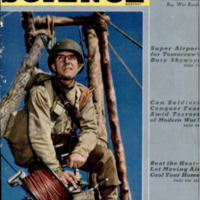 Popular Science Monthly, v. 143, n. 2, 1943
Popular Science Monthly, v. 143, n. 2, 1943
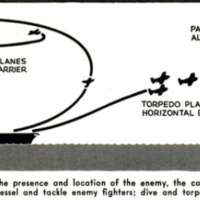 Schermata 2022-03-04 alle 15.03.32.png
Schermata 2022-03-04 alle 15.03.32.png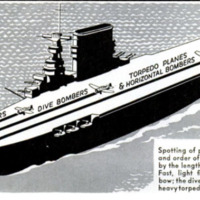 Schermata 2022-03-04 alle 15.03.39.png
Schermata 2022-03-04 alle 15.03.39.png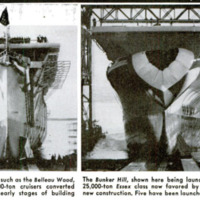 Schermata 2022-03-04 alle 15.03.47.png
Schermata 2022-03-04 alle 15.03.47.png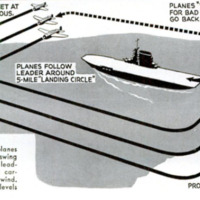 Schermata 2022-03-04 alle 15.03.53.png
Schermata 2022-03-04 alle 15.03.53.png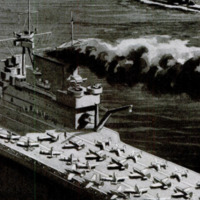 Schermata 2022-03-04 alle 15.04.02.png
Schermata 2022-03-04 alle 15.04.02.png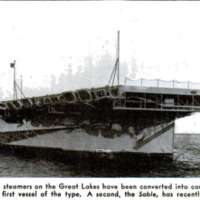 Schermata 2022-03-04 alle 15.04.11.png
Schermata 2022-03-04 alle 15.04.11.png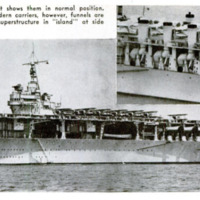 Schermata 2022-03-04 alle 15.04.18.png
Schermata 2022-03-04 alle 15.04.18.png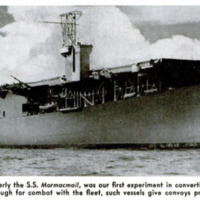 Schermata 2022-03-04 alle 15.04.26.png
Schermata 2022-03-04 alle 15.04.26.png







